What a Broken Wrist Taught Me About Drawing Skills
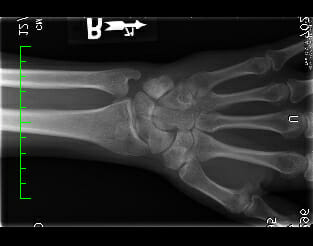
A few years ago, I broke my wrist on New Year's Eve.
I know what you're thinking, and no... it wasn't the result of too much boozing. That would at least be a fun story to tell, but the truth is far more dull: I was spreading salt on our icy back steps when I slipped and fell. The resulting fracture was to my right-distal radius, where it articulates with the carpal (wrist) bones.
The whole business was frustrating and painful, and I felt really stupid. But none of that matters. What matters – at least to me – is that with my hand and forearm in a cast, I wasn't able to draw anything for over a month.
At first, I didn't think this would be a big deal because I'd never broken a bone before. I figured I could use the time to catch-up on other things, and when the cast came off, I'd get right back to drawing just like before. What's the big deal?
If you've ever had a broken bone, you're probably shaking your head right now.
As it turns out, when a limb is immobilized like that – even for just a few weeks – something sinister happens: atrophy. The muscles you're not using begin quickly to whither and shorten. The result is that when you finally get your cast off, you're left with very little strength, control or flexibility. In my case, my drawing hand just didn't work anymore. What movement I had was minimal, painful and really, really clumsy – not a great recipe for drawing anything.
I was scheduled to teach a figure drawing class just a couple of weeks after the incident. I couldn't cancel because people had already signed-up, so I asked our student Ashly to be there to help out. I talked and pointed at things. Ashly drew a demonstration figure for the students and we all made the best of it.
What really freaked me out was what happened after the cast came off. We were about 4 weeks into the drawing course at that point, and students were struggling with drawing the face on their figures, so I thought I'd offer some guidance with my own quick version of a small portrait. My hand was stiff, but drawing a portrait demo is something I've done a thousand times before. Surely "muscle memory" alone would compensate for my diminished dexterity with the pencil.
Not so much.
What happened next was shocking – at least for me. Not only was the drawing I executed pretty terrible, and not of much use to my students, but my hand felt utterly alien. The best way I can describe it is that it felt like I'd had a complete hand transplant. Sure, I still had a right hand. I could pick-up stuff with it and open doors or whatever – but drawing? Moving the pencil subtly? Precisely? It was like I'd never been able to do those things. My attempts to hatch values on the page were tremulous and erratic, like I had someone else's hand attached to my arm – someone who'd never touched a pencil before.
Trying not to panic, I thought about how long it had taken to develop drawing skills in the first place: years at school, then more years practicing, teaching and demonstrating for students. How long would it take to get this smoked ham that used to be my right hand back in shape?
It was my wife who calmed me down (as she usually does). She reminded me that I am a drawing teacher, after all, and that this situation might actually be an opportunity – a chance to revisit the basics and get back in touch with what it feels like to be a beginner. She also reminded me that what’s most important about making beautiful drawings is actually in your head, not in your hand. In other words, drawing well is less about manual dexterity than about making good decisions. Just get back into the habit of drawing regularly, she told me, and your hand will follow.
So I did what I would tell any student in a similar situation to do: start simply, and practice.
On my first attempts, my fingers were actually so weak that I kept dropping the pencil by accident. So that’s where I started – with just picking up and holding the pencil comfortably. Pick up a pencil, hold it as if I was about to draw, then put it down again. Repeat. I did this as often as I could (for at least 15 minutes) each day to reconnect with the feel of the pencil in my hand, until it felt familiar.
From there, I proceeded through some of the early exercises we teach in our Drawing Basics course: executing straight lines repetitively, at different angles and at different lengths. I tried to maintain a rhythm with the pencil and focused intently on both the lines on the page, and on how my hand and arm felt while drawing them, trying to rebuild the connection between the particular physicality that yielded a desirable line and what I saw on the page.
It usually went something like this:
- That one felt good.
- No, that one was clumsy.
- That line was too dark.
- There. That one was better! Remember what that felt like.
- Now, do it again.
- Repeat
- Repeat
- Repeat
Slowly, I began to notice some improvement. It was the larger, broader motions that returned first. Drawing long, fluid lines across the page felt better after just a week or so. But the more subtle, careful pencil control – hatching and drawing very fine lines – continued to elude me and would require some more work.
I was actually anticipating this, since my doctor told me that the shorter muscle fibers – the ones responsible for very small movements and fine motor control – are the last to come back “online” after an injury like this. So I next turned my attention to shorter, more careful movements with the pencil by doing a lot of hatching.
This, too, was a strange experience. In the old days, I could turn hatching on and off at will. My hand was so accustomed to that back-and-forth movement that it would settle into a groove instantly, producing hatch strokes so closely knit that they would dissolve into continuous tone on the page. But post-injury, my hand was like an old lawnmower that doesn’t want to start. My hand felt dead and sluggish, and there was none of the automatic ease that I’d grown used to while drawing. If I did manage to scrub the pencil back and forth a bit, the lines were unpredictable. Some were on target, but others were poorly spaced apart, or too dark, or my hand would lurch spontaneously across the page, as if a mild electric shock had induced some kind of seizure.
A New Discovery: Slow Motion
To solve this problem, I tried something my piano teacher had me do when learning to play something new: practice in slow-motion. This makes a lot of sense when you think about it. Playing the piano requires your fingers to move in complex ways, often quite quickly, and it’s discouraging when they won’t cooperate. But any physical movement, no matter how complicated, can be made to seem simpler by slowing it down. So instead of trying to play at full speed, practice in slo-mo for as long as it takes to teach your hands the correct movements, then work gradually to speed things up.
This makes perfect sense for learning to hatch with a pencil, so I set about practicing in slow-motion. My normal hatching speed is about 4 or 5 back-and-forth movements per second – fast enough to maintain a comfortable rhythm, but not so fast as to feel reckless. For my slow-motion drills, I slowed it down by at least 75%, completing just one back-and-forth circuit each second.
It felt absurdly slow at first. So slow that it was hard to take the exercise seriously. But just like practicing the piano, when I got impatient and tried to go faster, things got clumsy and I was immediately reminded of why I was doing this. Like I did with the longer lines, I practiced this movement without trying to draw anything in particular. Instead, I spent a couple of weeks filling up one page after another with hatching lines – washes of pencil strokes of different lengths and at different angles. Everything about the exercise was deliberate.

Things improved over time. The random, erratic movements became less frequent and my optimism increased to the point where it seemed time to draw something for real. I feared hiring a model would put too much pressure on my still shaky hand (and confidence), so I set up a simple still life arrangement featuring a bosc pear and tiny orange pepper. The setup looked beautiful when lit up inside a shadow box and I looked forward to spending some time drawing it.
The results were a mixed bag. I like the little drawing I came up with, so I was encouraged by the results. But it was harder to execute than it should have been. My hand would still go “offline” every so often, where the hatching movement I’d been practicing wasn’t immediately available. I could solve this problem by doing some practice hatching on a piece of scrap paper, just to get the motor going again, but that’s not something I ever had to do previously and it was a little sobering. But nevertheless, the drawing turned out well in a way it wouldn’t have just a few weeks earlier, and so confirmed what I already knew: drawing skills improve with practice. Keep going.

I kept churning out pages full of hatching strokes before the urge to draw something “real” once again took over. This time, I felt ready to hire a model and draw a portrait. DaLawn is one of our most reliable models whom we’ve worked with for years. He’s fun to draw and is rock-steady in any pose. I invited him to the studio for a portrait session, and decided to record the drawing just in case I could get a YouTube video out of it (which you can see here if you’re interested.)
This drawing was more ambitious than the little still life, but it felt better. I didn’t experience quite so much difficulty making the required motions with the pencil and I started to remember how drawing portraits used to feel, like reconnecting with an old friend.
Is my hand back to what it was before the injury? Well, not quite. I still experience stiffness and a strange lack of responsiveness early in a drawing session that I never noticed before, but I can live with it. A little bit of warmup before getting to work seems to solve the problem. And who knows? Maybe this is something that just happens with age, anyway.
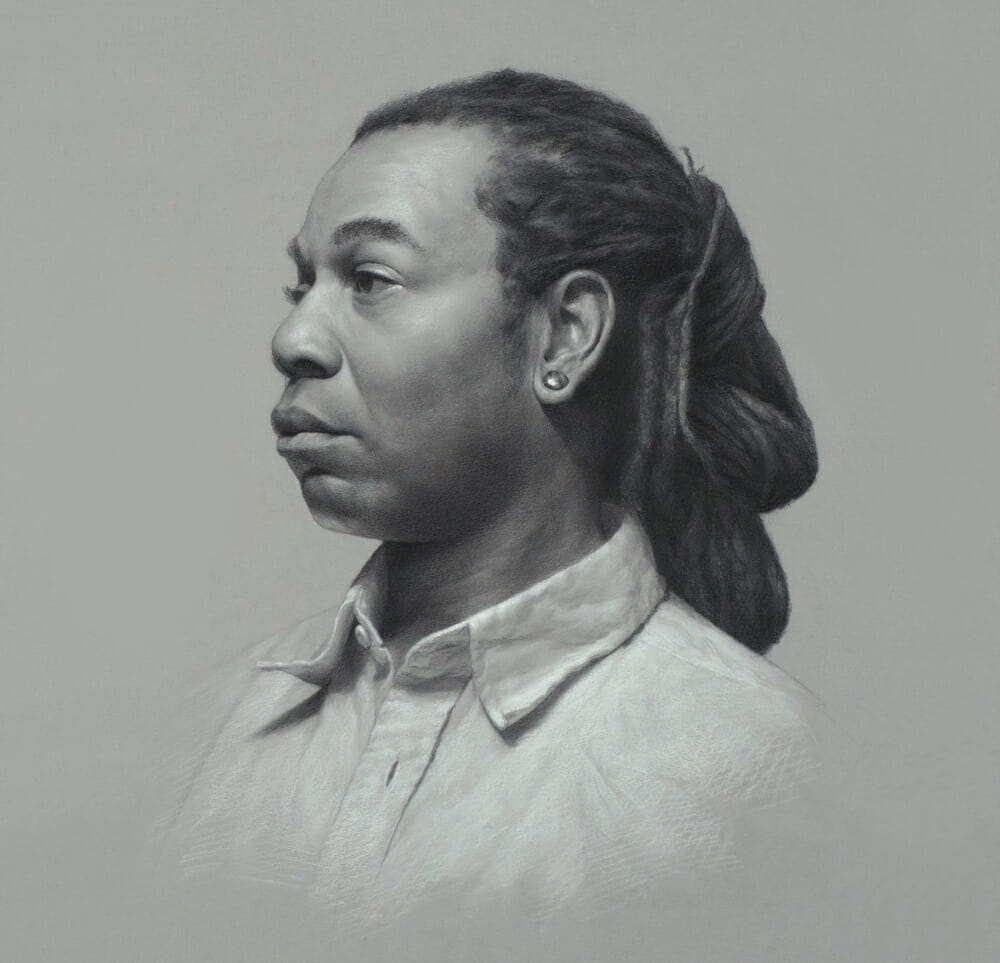
In the end I’m grateful for this experience. I still wish I hadn’t broken my wrist, but doing so has reminded me of the key role practice plays in developing drawing skills. It’s an easy thing to take for granted. Of course, you have to practice to get better at something, but it’s easy to lose sight of what that really means. True practice – of the kind that helps, anyway – requires discipline and focus on mundane, repetitive exercises that can feel unimportant in the moment. I didn’t really want to fill up page after page with hatching lines, and while doing it, I had my doubts about whether it would help. But it did help and while I’m glad it’s over, I’m happy I spent the time required to do it well.
I also made a new discovery in the form of slow-motion drills. It never occurred to me before to apply this technique of learning to play an instrument to drawing skills, but it makes sense that it would work. Any movement can be better understood and mastered when learned slowly. Once that’s done, speeding it up is relatively easy. I plan to use this idea with students in the future.






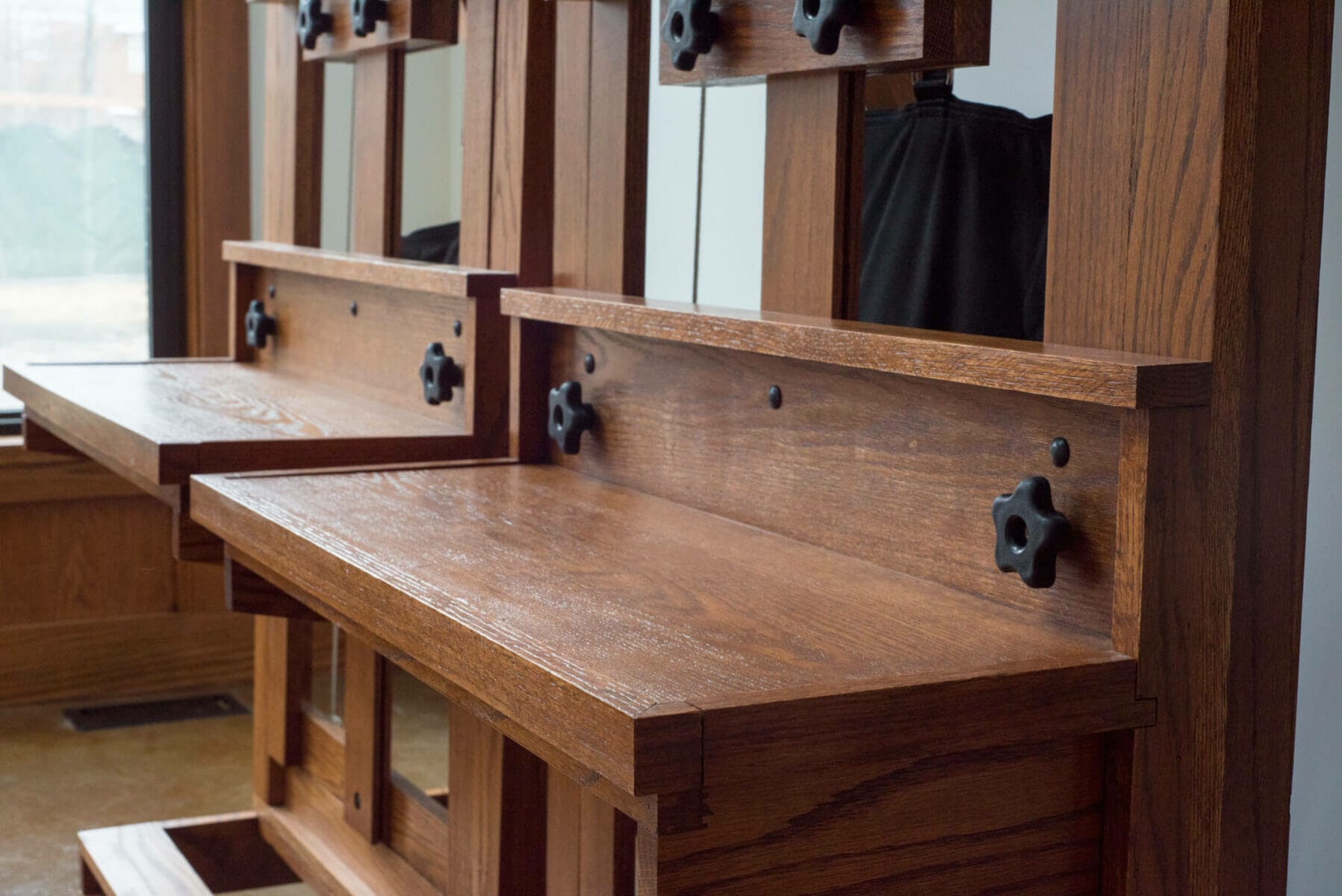
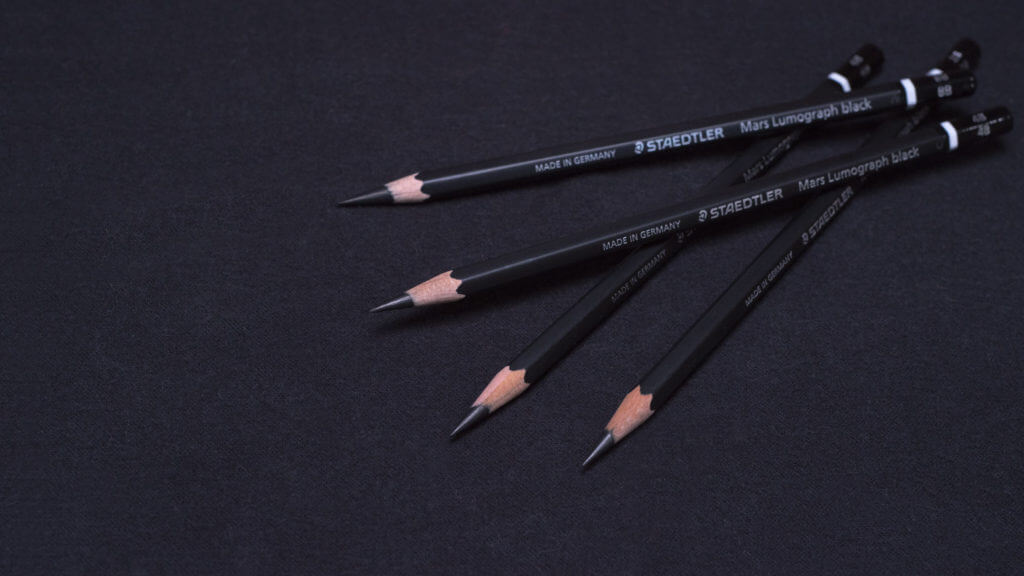

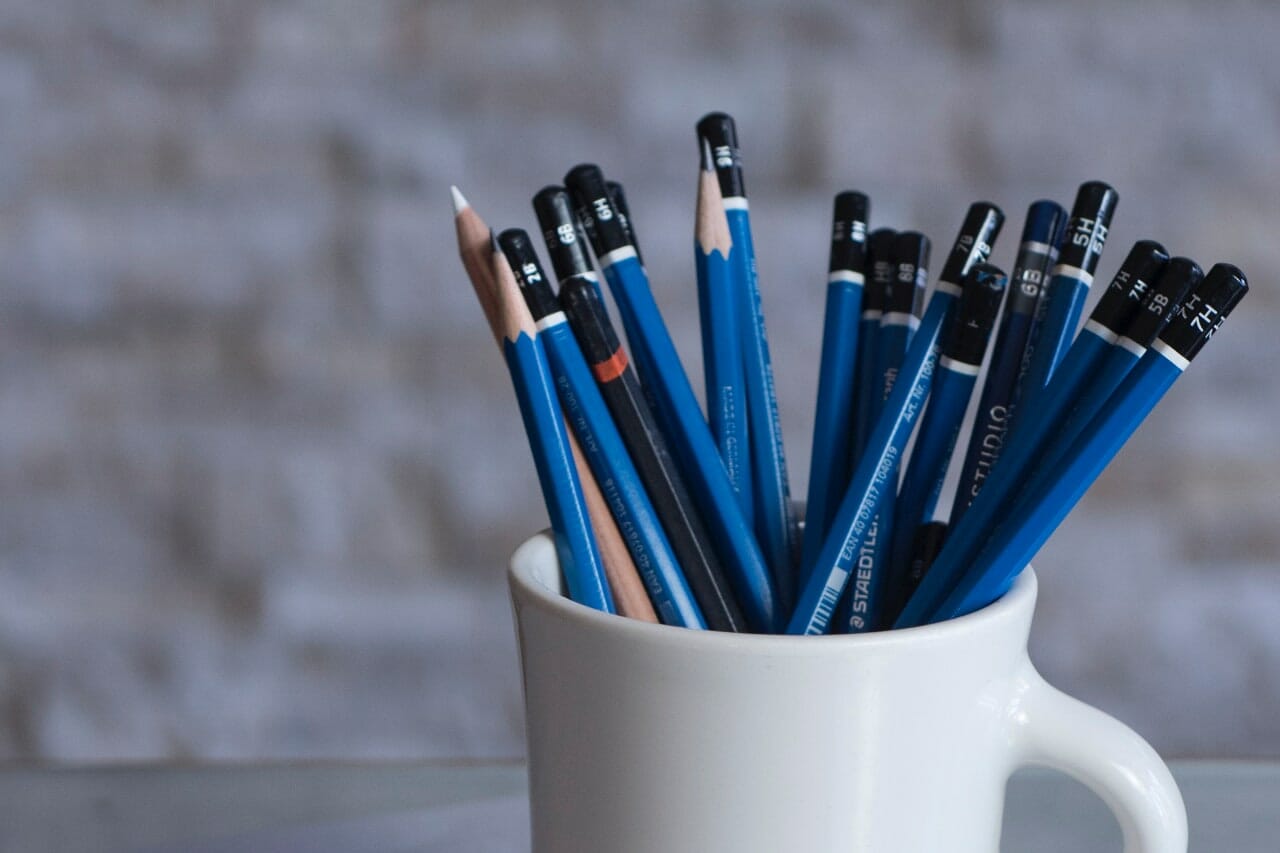
Thank you for this post. I’m 2 weeks into my 12 weeks in a cast for a scaphoid fracture and struggling with how to last that long without my art. The road ahead looks long but I appreciate reading how you managed it and I feel more positive about new skills I can learn along the way.
Thanks
Best of luck, Jo. I’m glad the post is helpful!
I am also an artist who uses mostly pencils and am a teenager. I may not be as great as you but I do love drawing very much. It broke my heart to have negative thoughts about never drawing again. I have finals in a week, great timing! But I was scouring the internet trying to find out if I could ever draw again after breaking a finger. After reading your story, I realized there was hope for my crippled pointer finger. Thank you for giving me hope for my hand again.
Heather, I’m so glad this post could help you be optimistic about your broken finger! It will likely feel a little different going forward, but you’ll adapt. There a lots of ways to draw, and I’m confident you’ll find a technique for moving the pencil with confidence again that works for you. Practice!
Thank you so much for your discovery and wisdom, I also broke my wrist too, reading and watching your video gives me hope🙏, again thank you for sharing your journey. Kayla
That story was almost scary. Lol. But I understand fully about figuring out how to get ones coordination back after an experience like that.
Great story David. Excellent information 🙂This blog is helpful. Well, thank you for teaching us this trick.
I’m currently recovering from broken index and middle fingers on my able hand and your article fills me with hope. I’m at the stage when it’s almost healed but the joints won’t bend and my fingers don’t feel like mine at all. Physio is painful but I need to get back to normal
ASAP. Patience and perseverance.
Your method of explaining is so well i, I m so impressed keep providing in future
Thanks so much for this article. I paint miniatures and just broke my wrist. I’m missing my painting after just one week but your article allowed me to see that I can get back to it eventually.
Glad it’s helpful, Frank. I hope you have a speedy recovery.
Hi David,
I broke my painting hand during my MFA while painting my thesis subject on location. I, too, felt like an idiot. I swatted at a wasp on a hill and tumbled to the ground and knew instantly I broke my hand. But, luckily, I was painting large and not drawing, so I continued using my other hand and by taping a paint brush to my broken hand wrist. It took longer, but I got the same results. I don’t think it would have worked with portrait work, though. Since then I’ve continued to use both hands while painting to avoid being left stranded again. And I carry a spray bottle woth soap and water to spray wasps instead of flailing around like an idiot. To facilitate healing, I skipped pain meds (Bones knit faster without pain meds) and focused on my work. Now I know anything is possible with grit and determination. – Ruthie Briggs Greenberg
hello David. I want to thank you for sharing this. I’m a fresh graduated art teacher and also a graphic designer. I was in a motorcycle accident a week ago and i broke my wrist. I was really worry that I can’t draw anymore. reading this really cheer me up and bring hope for me. I’m still in recovery phase, wish me luck! 🙂
Best of luck, Dinal! If your experience is like mine, you’ll be ok 🙂 Just be patient.
Hi I’m a 15 year old aspiring artist who just broke his wrist snowboarding. This really helped ease my anxiety when I found I could no longer draw straight lines!
Hi Daniel,
I’m sorry to hear you broke your wrist, but I’m glad this post helps. I think you have reason to be optimistic. I remember my orthopedic doctor saying that the younger you are, the more easily you can recover fully from this type of injury. His point was to temper my own expectations at the age of 44. But at 15, I’m guessing you’ll be able to bounce back from this no problem 🙂 Good luck!
Dear David , Thank you so much for your story. I was forced to redefine my life and found myself with all free time. I
started each day working on a gouache painting. I now have over a hundred. What this has given me Is a fluency in painting which is hard to put into words . It is so slow but repetition is awesome. I took a course from you on line drawing
Cloe and learned so much. Thank you again for your story.
Glad to hear it, Harriet 🙂
I was in a car accident several years ago and broke my right wrist. You are right, it takes a long time to get it back to “near normal”! I still have some stiffness in mine and the orthopedist told me I would most likely develop arthritis in it. I keep drawing though…so far, so good! Glad you recovered and could continue to draw!
Glad to hear your hand is at least “near normal”. I worry about the prospect of arthritis, too, but so far, so good. I guess I’ll deal with that when the time comes.
Thank you for sharing this, David! It is particularly relevant to me as three months ago the ring finger of my right hand sustained a severe and complicated fracture (spiral and there were two) when it got caught in my dog’s leash. Mark Cohen at Rush Orthopaedics, one of the top ten hand surgeons in the country, told me it was such a difficult case that he is using it in his lectures. I was very lucky. No one thought I would regain the full use of my hand, but yesterday I was released from occupational therapy earlier than expected. I haven’t tried to draw anything detailed yet, but I can tell my handwriting isn’t the same. SloMo!
I’m sorry to hear about your injury, Toni, but it sounds like it could have been worse. The trick now, I think, is to stop trying to get your “old hand” back, and develop new understanding with your current one. At least, that’s how I’ve been thinking about it.
Hi David, I taught drawing and painting for over 30 years professionally and often I had students who were very impatient. They thought that the hatching exercises were a waste of time and would do them at breakneck speed just to get them finished. Only when I managed to slow them down did they realize that was the way to obtain perfection. Speed and accuracy come later after lots of practice. I think they got tired of me constantly telling them, “Go slow now for speed later!” Today, many of them are highly accomplished artists in their own right.
We do our best as teachers, Dennis, but sometimes students need to learn things the hard way. I know I did, as you can tell from this post!
So glad you wrote this. Thank you.
I’m glad you’re glad, Lauren! Hope you guys are doing well. We miss you!
Thank you for sharing your story David. So happy to hear that your wrist is on the mend as seen in your astounding drawings. When you have the passion you will always find a way to accomplish what you desire. I know of an artist who is in a wheelchair and paints holding the paintbrush between his teeth.
I think determination and love will always win.
That’s inspiring, Christine 🙂
Great story David. Reminding ourselves often about always sticking with the basics and constantly practicing are sure-fire ways to improve our skills. It’s almost like developing a facial feature while constantly referring back to the whole. Thanks!
I like that analogy, Steve. It’s probably safe to say that a lot of things in life are about balancing the big ideas with the small details.